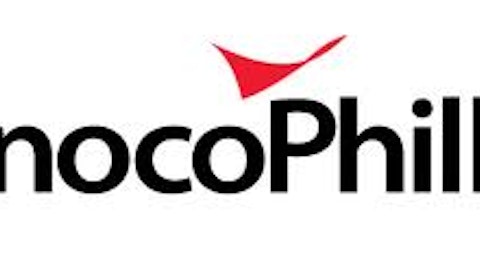Since the Conoco/Phillips 66 spin-off, the refiner has seen impressive price appreciation, with the stock price rising from $37 per share at the time of its IPO to $57.99 per share on April 17, an increase of nearly 64%. This split also improved Conoco’s margins, as its total revenue fell dramatically but profits only dropped slightly.
Additionally, the specialization which a purely downstream company provides helped to improve the overall profits at the ex-integrated oil company.
In 2011, Conoco’s downstream segment earned approximately $3.8 billion for the company, but once separated into Phillips 66 (NYSE:PSX), the downstream components earned $6.6 billion in their first year of operations. Specialization makes all the difference.
Looking to the future, in 2012 Phillips 66 (NYSE:PSX) announced plans to convert into a Master Limited Partnership, or MLP, structure during the second half of 2013. Meanwhile, a converted focus on unconventional oil sources such as shale oil and bitumen reserves in North America will help to add to Phillips 66 margins in 2013.
ConocoPhillips (NYSE:COP) is placing a larger emphasis on natural gas going into the future, and is very well positioned to take advantage of the liquid natural gas (LNG) market if congress decides to legalize exportation of it.
Most notably, ConocoPhillips (NYSE:COP) owns a 50% interest in LNG company Freeport LNG, a business that is expected to receive government authorization to export liquid natural gas outside of the U.S. at some point in the coming weeks. This will place ConocoPhillips (NYSE:COP) ahead of its peers in the LNG industry, as none of the other major players have the ability to legally export LNG yet.
Now back to Exxon. The energy giant sold it’s Austrian downstream segment in 2010, including 135 service stations. Later, in March 2011 the company sold its Argentinian assets. Again, Rex Tillerson announced in July 2012 that Exxon was exploring the sale of its downstream arm in Germany, a division that includes 1,100 gas stations and would be worth more than 1 billion euros ($1.3 billion).
Obviously Exxon Mobil Corporation (NYSE:XOM) is looking to eliminate its international downstream segments, but is there potential for a spin-off like ConocoPhillips did? Absolutely.
First off, there are no integrated oil companies that are large enough to absorb the costs involved with buying Exxon Mobil Corporation (NYSE:XOM)’s 25,000 distributors and 36 refineries. The only other option for decreasing margins is a spin-off.
The article ExxonMobil – An Upcoming Breakup? originally appeared on Fool.com and is written by Jake Pompeo.
Copyright © 1995 – 2013 The Motley Fool, LLC. All rights reserved. The Motley Fool has a disclosure policy.


